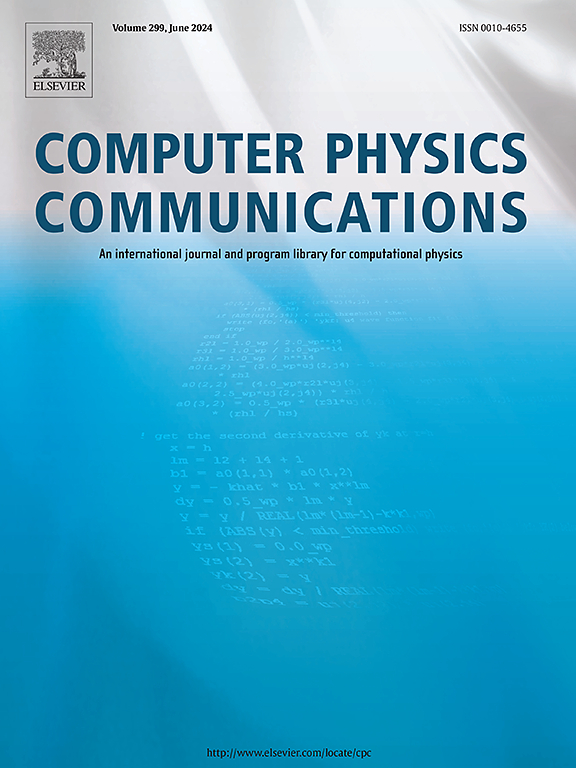Performance of the shifted minimal residual method for multiply shifted linear systems with real symmetric or complex Hermitian coefficient matrices
IF 3.4
2区 物理与天体物理
Q1 COMPUTER SCIENCE, INTERDISCIPLINARY APPLICATIONS
引用次数: 0
Abstract
We consider solving multiply shifted linear systems () with a real symmetric or complex Hermitian coefficient matrix A. For this type of problem, the shifted COCG and shifted BiCG methods have been considered as the methods of choice for the real and complex cases, respectively, and they are implemented in matrix libraries such as Kω. While it is also possible to apply the shifted version of the MINRES algorithm, to the best of our knowledge, the approach has attracted less attention. In this paper, we investigate mathematical properties of the shifted MINRES method applied to this type of problem and show that it has several advantages over the shifted COCG or shifted BiCG methods, such as absence of breakdown, monotonic decrease of the residual norm, and a lower operation count in the complex Hermitian case. Numerical results that confirm these advantages are also provided.

具有实对称或复厄米系数矩阵的多重移位线性系统的位移最小残差法的性能
我们考虑用实对称或复厄米系数矩阵A求解多重移位线性系统(A+σ(m)I)x(m)=b (m=1,…,m)。对于这类问题,移位COCG和移位BiCG方法分别被认为是实情况和复情况的选择方法,并在Kω等矩阵库中实现。虽然也有可能应用移位版本的MINRES算法,但据我们所知,这种方法吸引的关注较少。在本文中,我们研究了用于这类问题的移位MINRES方法的数学性质,并证明了它与移位COCG或移位BiCG方法相比具有几个优点,如没有击破,残差范数单调减少,以及在复厄米情况下较少的运算次数。数值结果也证实了这些优点。
本文章由计算机程序翻译,如有差异,请以英文原文为准。
求助全文
约1分钟内获得全文
求助全文
来源期刊

Computer Physics Communications
物理-计算机:跨学科应用
CiteScore
12.10
自引率
3.20%
发文量
287
审稿时长
5.3 months
期刊介绍:
The focus of CPC is on contemporary computational methods and techniques and their implementation, the effectiveness of which will normally be evidenced by the author(s) within the context of a substantive problem in physics. Within this setting CPC publishes two types of paper.
Computer Programs in Physics (CPiP)
These papers describe significant computer programs to be archived in the CPC Program Library which is held in the Mendeley Data repository. The submitted software must be covered by an approved open source licence. Papers and associated computer programs that address a problem of contemporary interest in physics that cannot be solved by current software are particularly encouraged.
Computational Physics Papers (CP)
These are research papers in, but are not limited to, the following themes across computational physics and related disciplines.
mathematical and numerical methods and algorithms;
computational models including those associated with the design, control and analysis of experiments; and
algebraic computation.
Each will normally include software implementation and performance details. The software implementation should, ideally, be available via GitHub, Zenodo or an institutional repository.In addition, research papers on the impact of advanced computer architecture and special purpose computers on computing in the physical sciences and software topics related to, and of importance in, the physical sciences may be considered.
 求助内容:
求助内容: 应助结果提醒方式:
应助结果提醒方式:


